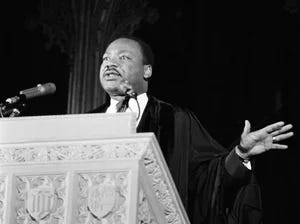In my last commentary, I reviewed the heroic struggle of the African-American movement for the attainment of equality of opportunity, beginning in the 1930s and culminating in a constitutional amendment and four federal laws, enacted in the period 1964 to 1968. See “The historic quest for equality of opportunity,” March 14, 2023.
The impact of the civil rights reforms was quickly visible to all. In the percentage of blacks holding elected and appointed political positions and in the content of acceptable political discourse. In the visibility of persons of color in previously racially exclusive public spaces, especially downtown restaurants, stores, and hotels, and in the facilities of interstate travel. In the numbers of blacks in previously all-white or nearly all-white colleges and universities. In the possibilities for purchasing housing. In the number of black personalities visible in the mass media.
It was not that the struggle for equality of opportunity…


